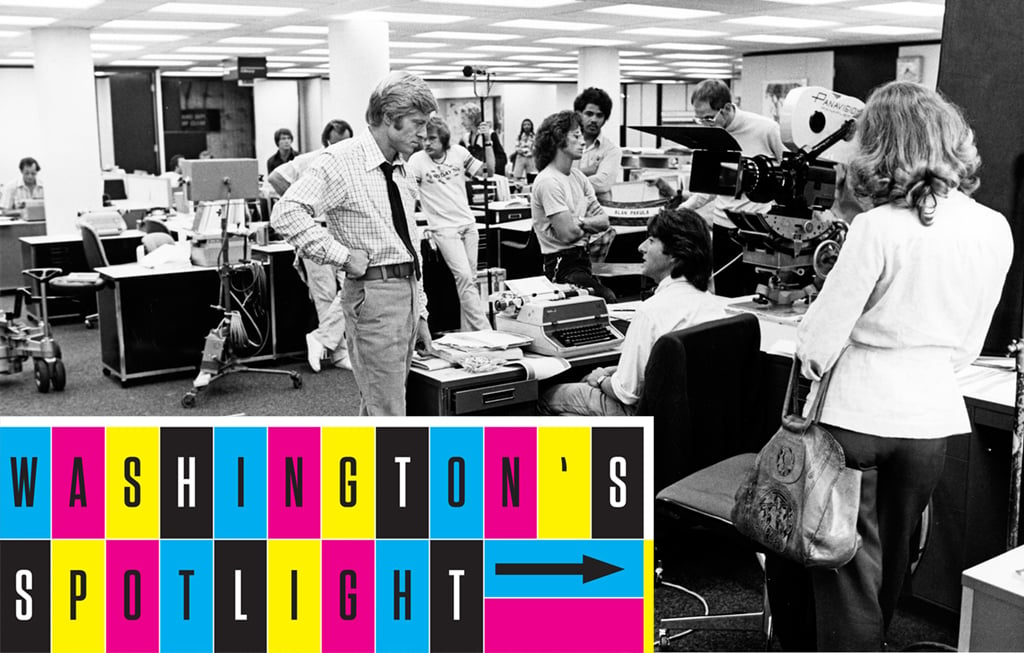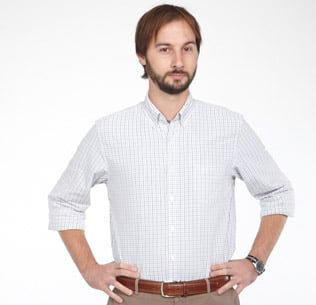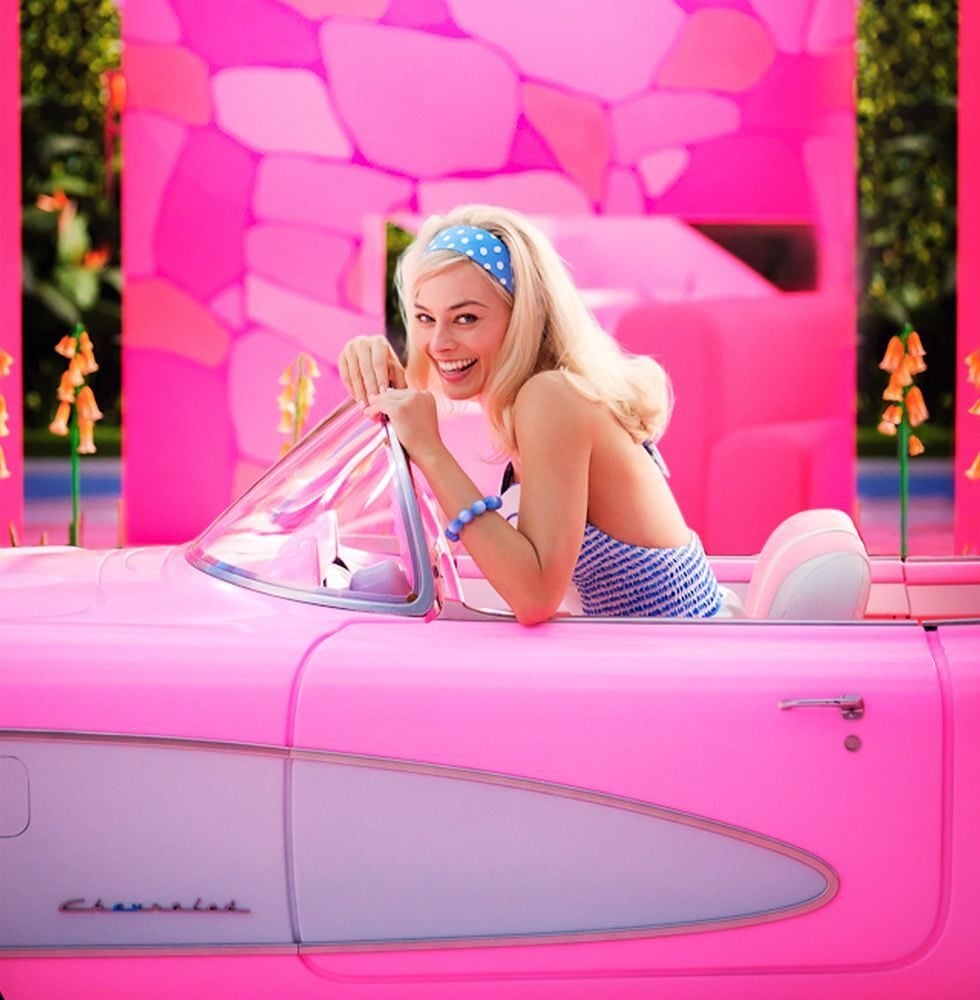Back in 1972, Robert Redford was promoting his film The Candidate, about a contender for a US Senate seat from California, when he began following a different sort of political drama on the East Coast. Bob Woodward and Carl Bernstein, two young reporters at the Washington Post, were unraveling the mystery behind a break-in at the Democratic National Committee headquarters in the Watergate. The scandal was a ways from toppling the President, but Redford, already intrigued, began paying attention to the bylines.
“I read this small little article on who these two guys were,” he later explained. “It said, well, one guy is a Jew, the other guy is a WASP. One guy’s a Republican, the other one is a liberal. One guy writes very well, the other guy doesn’t write so well. They don’t like each other, but they have to work together. I thought, ‘That’s really an interesting dynamic.’ ”
As we all now know, he pursued it—all the way through the 1974 book by Woodward and Bernstein to the glittery premiere of All the President’s Men at the Kennedy Center in April 1976; to eight Oscar nominations, including for best picture; and to guaranteed screenings of the guys in chunky ties following the money in every Journalism 101 class for decades to come.
Less known is that at the time, few people thought Redford was on to something.
On its 40th anniversary, here’s the story of how the most defining movie of Washington got off the ground against overwhelming odds.
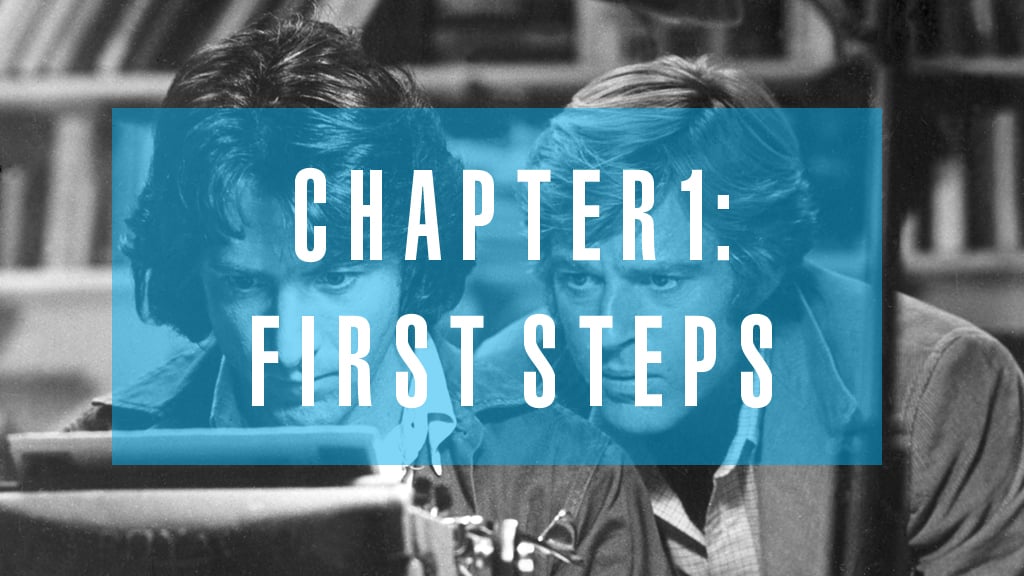
Watergate was still unfolding—President Richard Nixon was more than a year away from resigning—when Redford called Woodward in 1972 to ask for a meeting and was promptly rebuffed.
Bob Woodward: “I was wary, naturally, but disbelieving. I mean, who is this? Somebody working for the Nixon White House? You know, is this a prank? At this time, we’re under assault and doubt.”
Carl Bernstein: “I simply said we’re too busy to have anything to do with this. All hell was bursting loose, and it was unthinkable to get sidetracked on something like that.”
Eventually, Redford convinced the two to get together in Washington.
Redford, in a 2006 panel discussion: “We met in a kind of a secret place. It wasn’t a garage. It was a bar in the Jefferson hotel.”
Bernstein: “Woodward and I started to have long discussions about whether this was a good idea and worried about ‘going Hollywood.’ Particularly how that would be perceived by the Post, especially by [executive editor Ben] Bradlee and Mrs. [Katharine] Graham. We really—or so we thought at the time—wrestled with the question. I think the wrestling was perhaps an exercise to salve our own discomfort, and that we probably knew from the beginning that we were gonna do it.”
Katharine Graham, publisher of the Post, in her memoir, Personal History: “In many ways, the idea of a movie scared me witless.”
Bernstein: “It became essential that if we were going to do this, we had to have absolutely airtight assurances from Redford that the project would be faithful to the book. It really had to be about the reporting, the editing, and the publishing. Redford said that’s what he wanted to do.”
Next, Redford had to convince Hollywood.
Jon Boorstin, associate producer: “Everyone had lived through [Watergate]. On the one hand, that was terribly exciting and meant that it was the most visible project around. But on the other hand, it meant that everyone was fed up with it.”
Walter Coblenz, producer: “And political pictures have never been that successful.”
Boorstin: “How do you shape a movie about this? It’s sort of a thriller, except you never see the bad guys. There’s no real jeopardy, and it’s all very complicated, and everything that happens happens off-screen and all the people you hear talked about are all people you never meet. All formulas for not-a-movie.”
Woodward and Bernstein met with Redford in New York along with William Goldman, screenwriter of “Butch Cassidy and the Sundance Kid.”
Redford in Robert Redford: The Biography: “When [the reporters] left, I said to Bill, ‘There’s the movie. These guys. Their personalities. The aspects of each that propel the other. The way the investigation was led by these personalities.’ ”
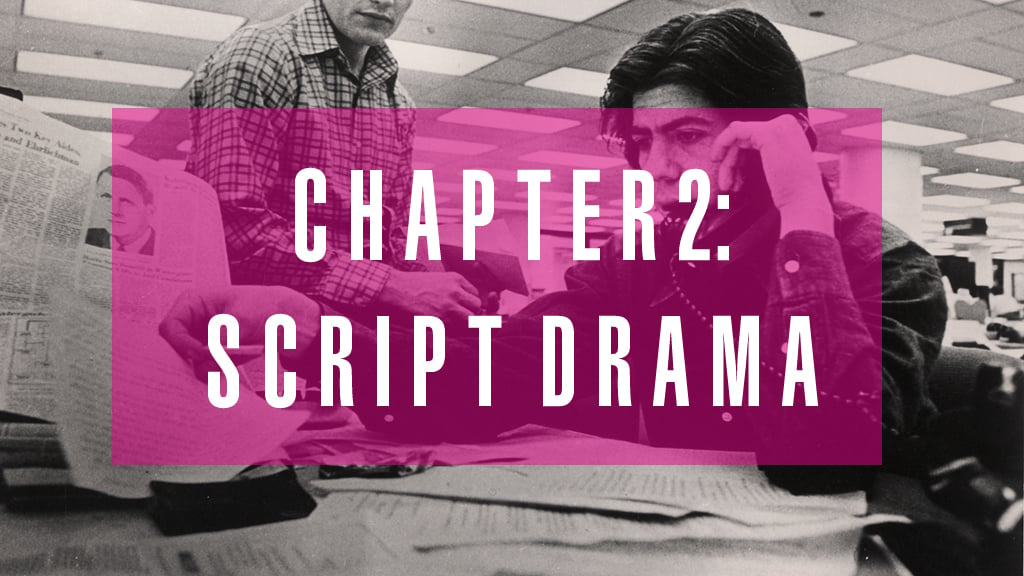
Redford bought the film rights to Woodward and Bernstein’s book in 1974 for $450,000. According to his biography, a mix-up resulted in the book’s proofs being sent to Goldman’s agent. That snowballed into Goldman getting hired as screenwriter. Right away, Goldman recognized challenges besides the news fatigue. In his autobiography, he described how the book had little structure and dialogue. There was a messy web of names and details to untangle, and for legal reasons, he couldn’t take many liberties.
Woodward, Bernstein, and a few Post editors who saw Goldman’s first draft of the script in the summer of ’74 were practically unanimous in their disapproval.
Woodward: “It was jokey. You know, he’d written Butch Cassidy and the Sundance Kid, and I think Carl joked at one point that it reads like Butch Woodward and the Sundance Bernstein.”
Bernstein: “Contrary to Redford’s assurances, it was highly fictionalized, particularly in regard to our own lives. It shook us up, Bob and myself. We said that if Bradlee or Katharine ever got a look at this, they were gonna be horrified. We had to do something and get this thing back on track.”
Woodward: “Carl’s girlfriend at the time was Nora Ephron. They rewrote [Goldman’s script], with my encouragement.”
Come fall of ’74, Woodward and Bernstein paid another visit to Redford in New York. The actor invited Goldman to join them, not realizing that the reporters were there to deliver their new take.
Bernstein: “I think Woodward said, ‘We wrote a draft—and please understand, this is not anything except suggestions.’ We were very clear about that. Redford immediately said, ‘Jesus—Goldman’s gonna walk in here in ten minutes and see that you guys have written a screenplay, and he’s gonna take one look at this, refuse to touch it, and walk out the door and go to his lawyer.’
“Goldman came in and proceeded to do exactly what Redford predicted. He was offended. We kept saying, ‘Oh, Bill, can’t you read it, take what you want, and leave the rest, rip it up?’ But he was having none of it.”
Redford himself wasn’t much enamored of Ephron and Bernstein’s revision.
Woodward: “What it did is it made Carl the center of the universe.”
Goldman in his memoir Adventures in the Screen Trade: “I don’t know about real life, but in what they wrote, Bernstein was sure catnip to the ladies.”
Woodward: “I think when Redford saw that draft, he said something like, ‘Carl, Errol Flynn is dead.’ ”
Bernstein: “I would say in retrospect that whatever Goldman says about the self-aggrandizing notion of that screenplay, it might well be right. I would not say that our treatment of him was sterling.”
According to Goldman’s memoir, Redford put him back to work producing new versions for director Alan J. Pakula, who wanted alternate versions of scene after scene. Goldman said he’d never written as many versions of a script—ever.
Redford in Robert Redford: The Biography: “All hope was lost. Alan hated the script, and we immediately made arrangements to re-write it ourselves . . . .”
Redford and Pakula hunkered down in the Madison Hotel, across from the Post, to make revisions. Many years later, Redford would say that only 10 percent of Goldman’s script made it into the picture—a controversial claim, given that Goldman would win a screenwriting Oscar for the film.
Goldman in Adventures in the Screen Trade: “And if you were to ask me ‘What would you change if you had your movie life to live over?’ I’d tell you that I’d have written exactly the screenplays I’ve written.
“Only I wouldn’t have come near All the President’s Men. . . .”
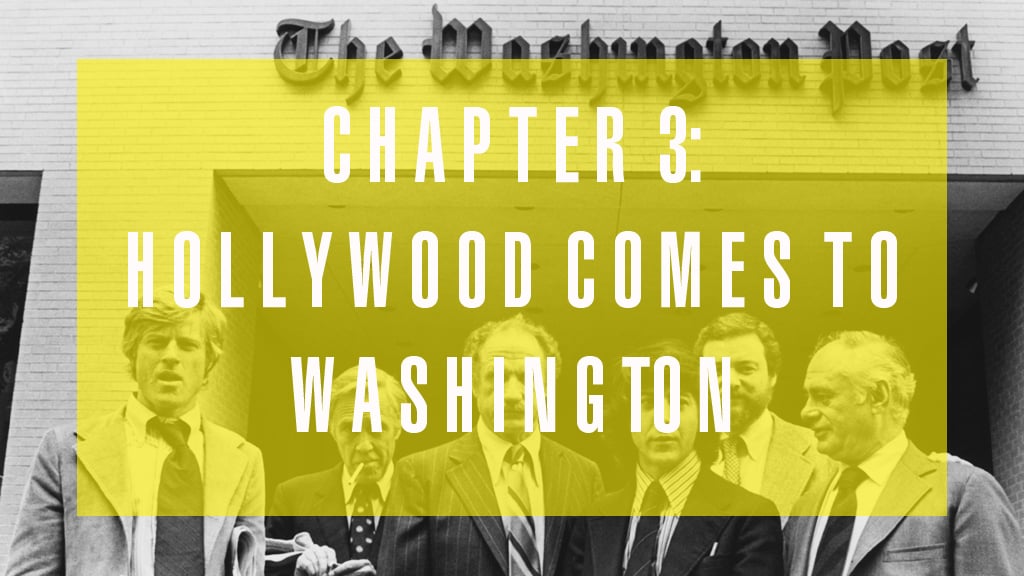
Redford initially envisioned a black-and-white, cinema vérité piece starring unknowns. But as the project gained momentum, Warner Brothers demanded Redford’s name on the marquee. The studio also wanted a bankable costar.
Redford cast himself as Woodward and first selected Al Pacino to play Bernstein. After thinking about it more, he decided Dustin Hoffman was a better fit for the chain-smoking cub reporter.
The most acclaimed casting remains Jason Robards, who won an Oscar for capturing Bradlee’s swagger.
Alan Shayne, casting director: “When I went to Washington and met Ben Brad-lee, I suddenly heard Jason’s voice. There was no question about it—that was Jason Robards.”
Woodward: “Right at this point, mid-’70s, was a low point for Robards. He had an alcohol problem, he’d been in a car accident.”
Shayne: “The head of Warner Brothers said Jason Robards is washed up: ‘What a terrible idea.’ ”
Redford had known Robards early in his career and was grateful for the kindness the older actor had showed him. Despite the studio’s hesitation, Redford approached him.
Woodward: “I think they said, ‘We’ll pay you $50,000 to play Bradlee.’ He took the script home, read it, came back a day or two later, and said to Pakula and Redford, ‘I can’t do it.’ They said, ‘Why?’ He said, ‘Well, all Bradlee does is run around and say, “Where’s the f—ing story?” ’ They said to him, ‘That’s what the editor of the Washington Post does. That’s his job. And all you have to do is find 15 different ways to say, “Where’s the f—ing story?” ’ ”
Woodward and I had discussions about whether this was a good idea and worried about ‘Going Hollywood.’
In 1975, cast and crew descended on Washington for research.
Ben Bradlee in his memoir, A Good Life: “And thus we embarked on a strange new adventure into the fantasy world of actors playing real people in a fictional version of real history. Nothing in my education had prepared me remotely to cope with these conflicts.”
Tom Zito, former Post reporter: “Certainly there were people in the newsroom who thought it was a terrible mistake to let all these people into the newsroom and let them go out on stories with reporters. But I think Ben really felt ‘in for a dime, in for a dollar.’ He believed that if they rubbed shoulders with us, they would do a better job of giving the general public an idea of what we did.”
Harry Rosenfeld, then the Post’s assistant managing editor for Metro, played in the film by Jack Warden: “[Warden and I] got to be friendly. He watched me do my work. We played tennis together, we had dinner together. I recall how Richard Holbrooke, then some sort of governmental functionary but not yet as grand as he was to become [as a diplomat]—but notoriously ambitious—came to our table to make contact with Warden. Just to cozy up.”
Bernstein: “Both Redford and Hoffman did more than shadow us for a few months; they kind of half-lived with us. I introduced [Hoffman] to friends, he came to a family Seder at my parents’ house, we hung out at the Booeymonger in Georgetown. He kind of became a reporter. He studied relationships I had, my history. I remember he wanted my watch—he wore my watch during the film.”
Rosenfeld: “Someone told Dustin Hoffman that I insisted my male reporters own a necktie, so that if they had to be sent out on an assignment that by my sensibility required a necktie, it would be available for them. Hoffman was amused by that, and he didn’t own one. So he went out and bought one and with a flourish came into my office and said, ‘Look, I bought a necktie!’ ”
Redford at the 2006 panel: “Bob was really a tricky guy. ’Cause I’d say, ‘Bob, you seem like a pretty dull guy.’ And he says, ‘No, that’s right, I am.’ And I said, ‘That’s not great for me to play that. Can you give me any clue of some kind?’ [Bob said,] ‘No, I’m telling you, Carl’s the exciting guy. I’m not interesting at all.’ . . .
“After I’d spent a lot of time with Bob, I realized that that part of Woodward, that kind of flat, polite, kind of gentle, slow-talking manner was basically a front for a person with a killer instinct. . . . So that’s when I realized I did in fact have something to play . . . .”
Bradlee in A Good Life: “[Pakula] learned more about me, my mother, father, brother, sister, hopes and fears than any shrink (five, I think) I’ve ever consulted.”
In the midst of this strange time, three Post reporters—Tom Shales, Tom Zito, and Jeannette Smyth—were assigned to write a long story about the Hollywood invasion into the newsroom.
Tom Shales: “We were told to be irreverent, and unrelentingly so. Not to attack the Hollywood people but just to make sure we weren’t in awe of them. . . . There was this anxiety around the paper of not surrendering to Hollywood’s lure and not to fall in with that crowd. We didn’t want to look like we were brown-nosing Hollywood.”
The story ran on April 11, 1975. Its headline: WHEN WORLDS COLLIDE: LIGHTS! CAMERAS! EGOS!
The attention of the world on you was different than the attention of the world on the story you wrote…it destroyed every marriage in the place.
From the Post article: “Roles are being suddenly reversed here; actors are going to be reporters and reporters are onstage, playing themselves for the observing actors. Normalcy is disrupted, simple privacy invaded, and ironic conflicts generated as two disparate worlds—the entertainers and the working press—meet on the press’s turf.
“Professional newspaper people prefer to see themselves as detached, dispassionate observers—rumpled scribblers lurking carefully in the background. Now they find themselves bedfellows (not literally, of course) with ‘The Stars,’ emissaries from Hollywood.”
Sally Quinn, then a Post reporter and later Bradlee’s wife: “I walked in one day, and Redford was sitting at one of the desks. You could see a lot of the women copy aides were spiffed up with hair and makeup and their cutest little outfits, prancing around. Everyone was sort of showing off.”
From “When Worlds Collide”: “ ‘I’m always looking around to see what Redford or Hoffman are doing,’ admits Margot Hornblower, a young Metro reporter. ‘It’s distraction, but we all need a little distraction. Some people get carried away. I mean, Dick Cohen has an orgasm every time Redford comes over to his desk.’ ”
Jeannette Smyth: “There are two kinds of reporters: showhorses and workhorses. And the showhorses were all up into that shit.”
Zito: “As you might imagine, Robert Redford was not crazy about the story. . . . A classic case of people from Hollywood being out of their element. Not only out of their element but in a room with a bunch of reporters who were always looking for something smarmy to say.”
Christian Williams, the Post assignment editor on the story: “Everybody in that article you can say is laboring to deal with the fact that the people who are telling them how great they are don’t know anything about it. Previously, it was peer review—if your friends think you’re a good writer, it’s a big deal. Now the whole entertainment business said you were a good writer. It changed your perspective on things.
“The attention of the world on you was different than the attention of the world on the story you wrote. . . . It destroyed every marriage in the place.”
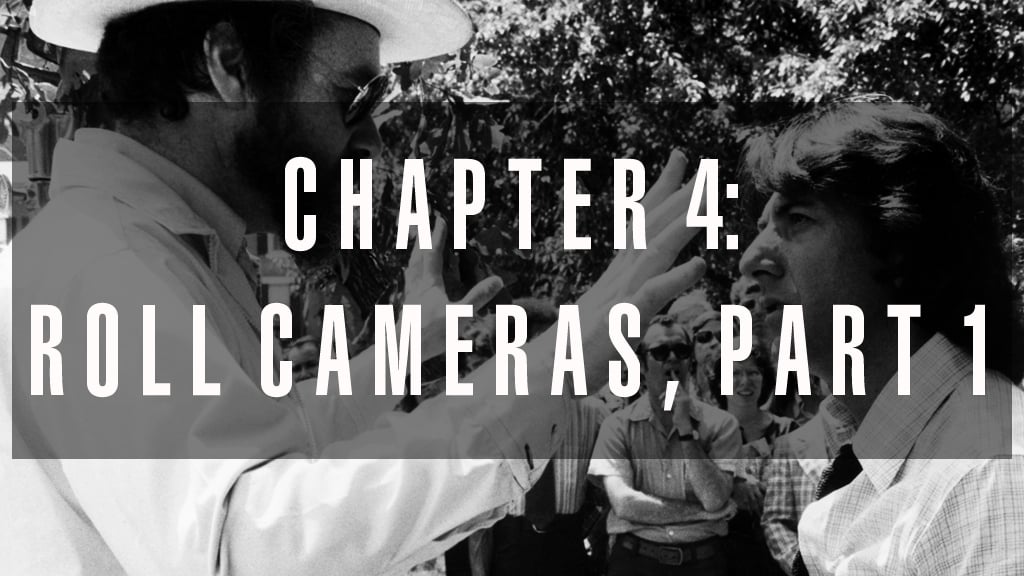
Redford wanted to film on location at the Post. But as he says in his biography, after two weeks of botched shoots, everyone realized it was impossible to make a movie and put out a daily paper in the same room. So construction commenced on the now legendary recreation of the newsroom in Burbank, California. The set decorators had gone so far as to collect boxes of real trash from the Post newsroom.
Woodward: “I remember Walter Coblenz came by my apartment and said, ‘We want to get things exactly right. I want to buy that chair. I want to buy that picture. . . .’ So he bought these things from me. Paid a lot of money for them.”
Coblenz: “Bradlee and Woodward and Bernstein came [to visit the set], and they couldn’t believe what they saw. Bradlee went right to his ‘office’ and started to look through the bookshelf and said, ‘These are my books!’ ”
Zito: “[Visiting the set] was almost like being on an acid trip. . . . Part of what amused us was the sort of slavish devotion to detail.”
James Webb, production sound mixer: “On top of that, everything in that set worked. The fax machines, the teletype machines, the typewriters—all that stuff.”
[Visiting the set] was almost like being on an acid trip.
The verisimilitude helped the film win a set-design Oscar for production designer George Jenkins and set decorator George Gaines.
Coblenz: “I think the Oscar was more than for the newsroom. It was also for designing the whole movie. The darkness, the light, the shadows—it all played an important part. Our cameraman, Gordon Willis—his nickname was the Prince of Darkness.”
Remember the Deep Throat scenes?
Boorstin: “Don’t forget, at the time no one knew who this guy was. No one even knew whether he existed. So what we had to do was create this character [of a secret source] who felt credible but who also was almost a mystic, mythical figure. If you notice, you never see him enter or leave. There’s nothing, and then bang—Redford hears a noise and turns around and he’s just standing there. Then he turns around again and he’s gone.”
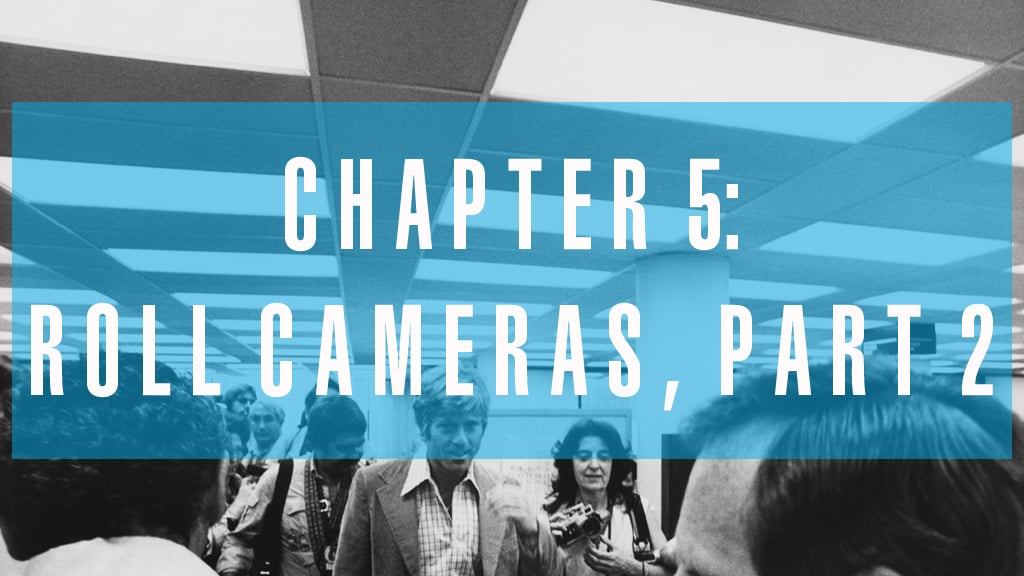
The film earned another Oscar for its innovative sound design.
Boorstin: “All the telephone calls were live—they weren’t faked. They had a real actor on the other end of the line playing the character.”
Webb: “The studios hated that—they’re bringing in somebody that would normally just come in for a voice-over recording, and it’s a different rate to bring ’em in. . . . I don’t think that type of recording has been done much before or since then.”
Boorstin: “The opening begins with those big typewriter keys slamming and hitting the paper. We had to make that. Pakula said, ‘I want to feel the power of these things. I want you to hear these key hits like you’ve never seen them before.’
“Wham! This first key hits like a pile driver. People took the sound of a gunshot and the sound of a whip crack, with four or five typewriters they recorded. We sat in the mixing studio and tried different combinations of these things to get the perfect sound. I remember we spent at least three hours on that ten seconds of film.”
Redford at the 2006 panel: “I remember thinking the music had to be minimal. . . . It was pencils and phones and dial tones and dialing and scratching . . . elevated to illustrate the power of those tools being treated as weapons.”
David Shire, composer: “I was afraid any music was just going to sentimentalize it or sound unnecessary. Pakula said, ‘Well, I’d like you to take a shot at it.’ And I asked him, ‘Well, what’s the music really about?’ He said, ‘It’s really about reminding people every ten minutes that there are two young hearts beating faster as they pursue this thing.’ ”
Coblenz: “He composed a wonderful score, but it’s only used a few times. After he finished, he talked to me one day and said, ‘You know, you don’t have to give me credit on this, because it’s so little music.’ I said, ‘We’re not paying by the note.’ ”
Two standout scenes involved the reporters grilling the “Bookkeeper,” a reluctant source played by Jane Alexander, who earned an Oscar nomination for the role. Alexander was in Washington doing a play at the Kennedy Center when she was summoned to audition.
Jane Alexander: “The first scene with Dustin is my absolute favorite that I have ever filmed. It was a very hot summer day, and I remember walking onto the set on my way to go to makeup and hair, and Alan said, ‘Oh—hi, Jane, you look great. Let’s go.’ And I said, ‘No, Alan, I just . . . . This is my own little summer dress, and I don’t have my makeup and hair or anything.’ He said, ‘You look perfect—just come.’ So I knew something was already very interesting.
“Then Alan just immediately said, ‘Sit in that corner,’ and Dustin sat right opposite on a little kind of couch. Right away it was very tight and tense and claustrophobic and hot. And that’s how Alan did it. I mean, it was pretty damn easy to feel that I was getting pushed by Dustin.”
Boorstin: “You could say that the movie is about ‘why do people talk to journalists?’ The confessional urge. I think that was Alan’s great insight—that’s what gives it humanity and makes it come alive. It’s about people calling up their better selves.”
Alexander: “The second scene is out on the porch, out in the air. So clearly what has happened, I think in Pakula’s thinking, is she’s letting go. Even though she’s still scared, she’s a little more comfortable with the situation. It’s great.”
Alexander’s scenes were shot in a DC rowhouse, one of several filmed on location. When producers tried to shoot on federal property, they faced pushback from the new administration.
Coblenz: “We were given permission to film in the White House press room from Ron Nessen, who was the press secretary at the time under [Gerald] Ford. Then two days before we were supposed to film, they denied us permission. We were at first also denied the Library of Congress shot, but then with the help of [Motion Picture Association of America president] Jack Valenti at the time, we were able to film there.”
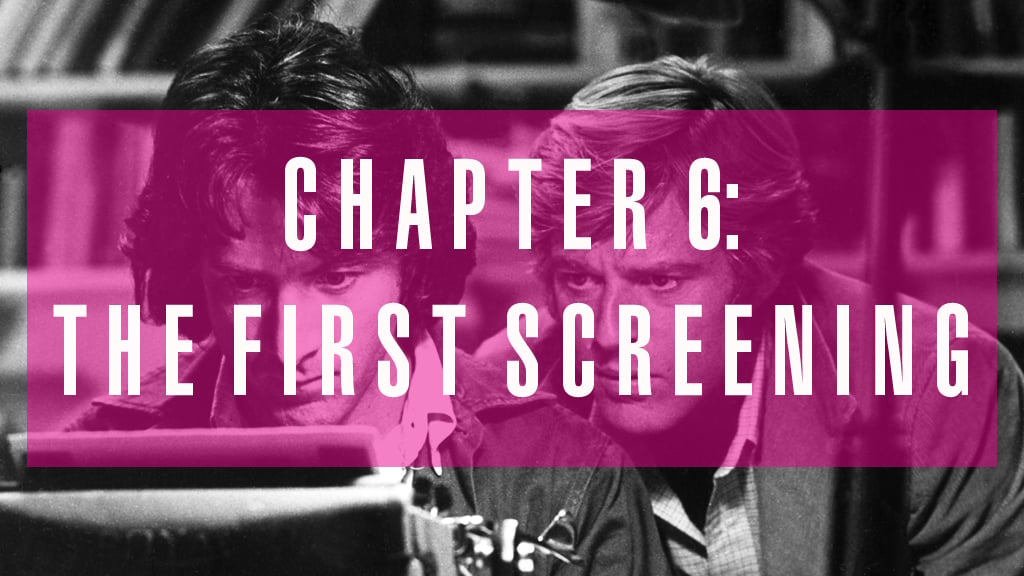
When post-production was drawing to a close, select Post staffers were invited to watch a rough cut at the DC offices of the Motion Picture Association of America.
Rosenfeld: “It was an empty auditorium, and we were all scattered. We didn’t sit with each other. I don’t want to read minds—I’ve always cautioned against reading minds—but I had a feeling people were nervous.”
Bernstein: “Tense. I think I was in the second row.”
Woodward: “Tight sphincter.”
Bernstein: “But as the movie went on, I started to feel this sense of relief. Right away, very quickly, you could see that they had focused on the right things.”
Bradlee in A Good Life: “And when it was over, no one said a word, until finally Redford pleaded with us, ‘For God’s sake, someone say something,’ and most of us mumbled our general approval.”
Rosenfeld: “I was kinda stunned. I didn’t know if it was good for us or bad for us, frankly. If I remember correctly, that seemed to be the mood of everybody else there.”
Quinn: “I was just blown away by how accurate [Jason Robards] was, how he really got Ben. . . . There was one moment when Ben comes into the newsroom, and he’s in black tie and they’ve got this story they want to run. Ben reads it and throws it back on the desk and says, ‘Run that baby.’ And as he’s walking out of the newsroom, he smacks his hands, you know, like ‘yes!’ It was such a Ben gesture, and Jason just—I don’t know where he got it, whether he saw Ben do it or whether he made it up or not. But it was just perfect.”
Not everybody was pleased. One of the film’s most significant omissions was city editor Barry Sussman, who had been instrumental in editing the Watergate stories but was left out of the script. Woodward and Bernstein say it’s still their biggest regret about the movie. Another vexed staffer was managing editor Howard Simons, who hated his portrayal so much that it tainted his years-long friendship with Bradlee.
Zito: “I think that Howard always felt a little bit like he was in Ben’s shadow. He was a sweet, wonderful guy, but he did not have the bravado that Ben had. The guy who plays him in the movie is kind of a schlubby guy, and the guy that played Ben is a charismatic guy. And I think that kind of upset him.” (Simons eventually left the Post; he died in 1989.)
Rosenfeld: “I think the film captured the spirit of Woodward and Bernstein’s work exceedingly well. But I think they portrayed the editors in a very flip way, as if the editors made their decisions with a snap of their fingers, then walked away. In fact, we agonized at it—it was an agonizing time. Wondering whether you were right, putting all your nerves, energy into it, then questioning yourself and questioning others and coming to very difficult decisions.
“But it’s a film, for godsakes. It’s not a documentary. You don’t beat a dog for not giving milk.”
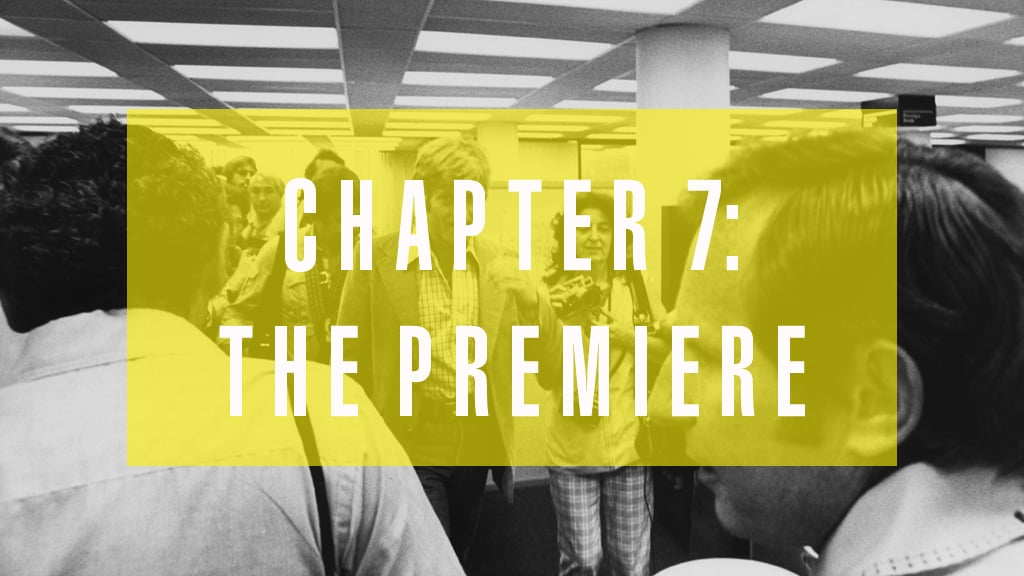
On April 4, 1976, “All the President’s Men” premiered at a gala Kennedy Center event, right across the street from the Watergate, the building where all the drama began.
Bradlee in A Good Life: “We still faced the ordeal of the formal opening . . . . ‘Ordeal’ because the goddamn reporters and TV types were determined to follow the actors around until they cornered them with the people they played and asked us the inane and inevitable questions. ‘Do you think Redford (Hoffman) (Robards) was accurate in portraying you? Is that what it was really like?’ ”
Graham in Personal History: “President Ford sent me tickets for the presidential box, along with the key to the refrigerator in the box, which contained champagne for me and my guests with his compliments.”
Quinn: “There was a lot of press covering it. [Woodward and Bernstein] weren’t used to that much press coverage, although because of Watergate, their book had gained a lot of notoriety—but still, this was on another level.”
Alexander: “It was actually rather frightening. [Redford] was such a huge star then, and he and I went out into the lobby to go into the theater, and the crowds just came around in a crush. It was really terrifying—at one point, my feet were off the ground. They were crushing so much to get near Bob, and bodyguards had to come in and take him away from the crowd.”
Rosenfeld: “I have a great photo in my collection of Bradlee, Hoffman, and I laughing uproariously. And what we’re laughing at was a dirty joke Hoffman had just told that Bradlee and I just enormously enjoyed.”
Williams: “It was the age of cool. And suddenly we were cool.”
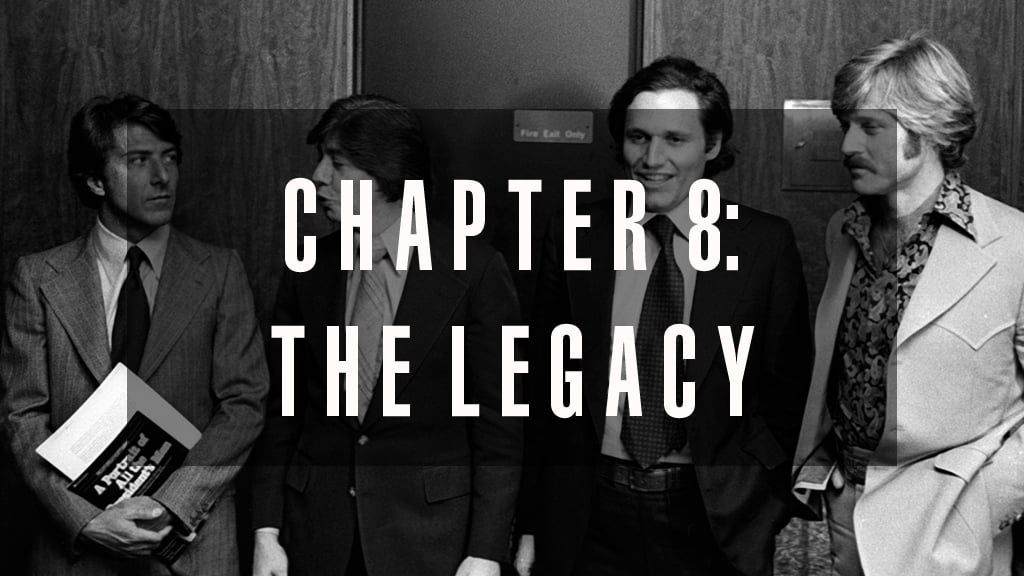
The film became a hit, grossing $70 million and garnering eight Oscar nominations. That year, an unusually large number of now-classics—“Taxi Driver,” “Network”—were vying for best picture. It lost to “Rocky.”
Boorstin: “The idea that they were sort of equal in attention-getting is kind of a miracle. Rocky is so effective at doing what it does in the most conventional, straightforward movie-narrative way. All the President’s Men was, dare I say, almost an art movie.” (Read more of Boorstin’s thoughts on the film’s anniversary at the Los Angeles Review of Books).
Bernstein: “There is no glamorization of reporting in All the President’s Men. It’s about all those goddamn wrappers from McDonald’s hamburgers piling up. The methodical nature and attention to detail and developing sources and having doors slammed in your face.”
After that, there was never a shortage of hungry young reporters on the make in Washington, pining to have doors slammed in their faces.
It was the age of cool. And suddenly, we were cool.
Michael Wilbon, former Post re-porter: “I watched it on a Friday, and I went to work at the Post on Sunday. I remember walking onto the fifth floor for that internship, and it looked damn like it did on the big screen. After I was hired full-time, I said to somebody one day, ‘How long is it gonna take me to get over the fact that I’m getting off the elevator on the fifth floor of the Washington Post?’ ”
Smyth: “Journalism became a profession for gentlemen. And it had never previously been one. I mean, Carl never graduated from college. But after the movie, there was the impression that it’s where all the sharp-elbowed, Ivy League white guys went.”
Arch Campbell, then a feature reporter for Channel 4: “People would approach Post reporters with awe. Almost everybody on the staff became like a movie star. I remember going to Hechinger’s—the old hardware store—and Bob Woodward was in there buying a set of hedge clippers. Several of us kind of cowered in the distance just looking at him.”
Williams: “When the movie was coming out, after Watergate, as a Washington Post reporter you could put out nine calls on deadline at 4 o’clock in the afternoon and get nine callbacks in a half an hour. People were paying attention. We felt it was easier to be a reporter, it was good to be a reporter. It meant something.
“But if you missed getting a little bit of attention, you felt bad. ‘What am I not doing? How come I’m not being noticed?’ It was a two-edged sword.”
Zito: “The movie did an incredibly good job of portraying what the world of being an investigative journalist was. But I don’t think that’s why people wanted to be investigative journalists. I think it was because they wanted to be Carl Bernstein or Bob Woodward played by Dustin Hoffman and Robert Redford.”
Wilbon: “We are usually able to separate fiction from reality—certainly when you’re a reporter and you’re already sort of a cynic on some levels. But it was never really possible to separate All the President’s Men from the Washington Post.”
Staff writer Michael J. Gaynor can be reached at mgaynor@washingtonian.com. On Twitter, he’s @michael_gaynor.

